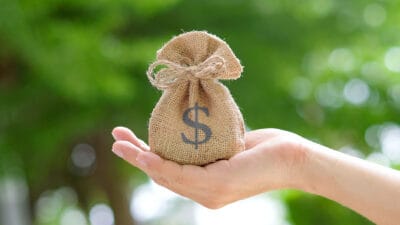ASX shares that offer dividends can be appealing, but how are you supposed to choose between them all for passive income?
In this article, I'm going to talk about three of my favourite ways to evaluate ASX dividend shares. Some investors may have different priorities, but I'd suggest that each element that I'm going to talk about is important for every income investor to think about.
Dividend yield
The headline-grabber for a lot of dividend investors is the dividend yield, so let's start there.
This tells us how much of a cash payment an investor can expect from their investment. For example, if someone invested $1,000 in a business with a 4% dividend yield, it'd pay $40 over a year. A 6% dividend yield would pay $60. And so on.
As income investors, we want a certain amount of payout from our stocks. However, a yield that is too big may not be the best option if the dividend is in danger of being cut or if a high dividend payout ratio means little re-investing for growth.
Examples of high-yield dividend shares I'm interested in are Telstra Group Ltd (ASX: TLS) and Metcash Ltd (ASX: MTS). In FY25, according to Commsec, Telstra is projected to pay a grossed-up dividend yield of 7.4%, and Metcash is projected to pay a grossed-up dividend yield of 7.8%.
Stability
Passive income is a useful source of returns, but only if the payments keep coming. If someone is relying on income to pay for their life expenses, then they need those dividends to keep flowing, even during a recession.
Dividends aren't guaranteed, but some businesses operate in more stable industries than others, resulting in stable profits and resilient payments.
Commodity prices have a history of bouncing around, so while Rio Tinto Ltd (ASX: RIO) has a projected grossed-up dividend yield of 7.5% for FY24, it could easily be substantially smaller in FY25 if the iron ore or copper price crashed in 2025.
Energy infrastructure business APA Group (ASX: APA) provides half of the nation's gas usage, which provides predictable cash flow to pay growing distributions. It has grown its distribution every year for the past 20 years.
Brickworks Limited (ASX: BKW) has a diversified asset base, which is paying its growing rental profits and rising dividends, enabling Brickworks to grow its dividend every year for the past decade. It hasn't cut its dividend for almost 50 years.
Sonic Healthcare Ltd (ASX: SHL) is an ASX healthcare share that has grown its dividend most years over the past three decades, including consistent annual growth over the past decade.
Dividend growth
The last few years have shown how important it is for our work/investment income to grow to ensure we stay on top of inflation.
A business like APA has a great track record of slow and steady growth, but there are a number of companies that have grown their dividends at a much faster pace. That means a lower starting dividend yield can catch up to and overtake a high (but stable) yield over the years.
For example, Collins Foods Ltd (ASX: CKF) has grown its annual dividend by around 150% in the past decade.
Pinnacle Investment Management Group Ltd (ASX: PNI) has grown its annual dividend by 210% in the last six years.
Fund manager GQG Partners Inc (ASX: GQG) has just grown its latest quarterly payment by 56% year over year.
Foolish takeaway
By looking at these three passive income factors, I think investors can build a good dividend portfolio without being lured into names that aren't necessarily the right long-term choice (in my opinion).
I'm a fan of many of the businesses I've mentioned, which is why I'm a shareholder in a lot of them for dividends and long-term capital growth.









